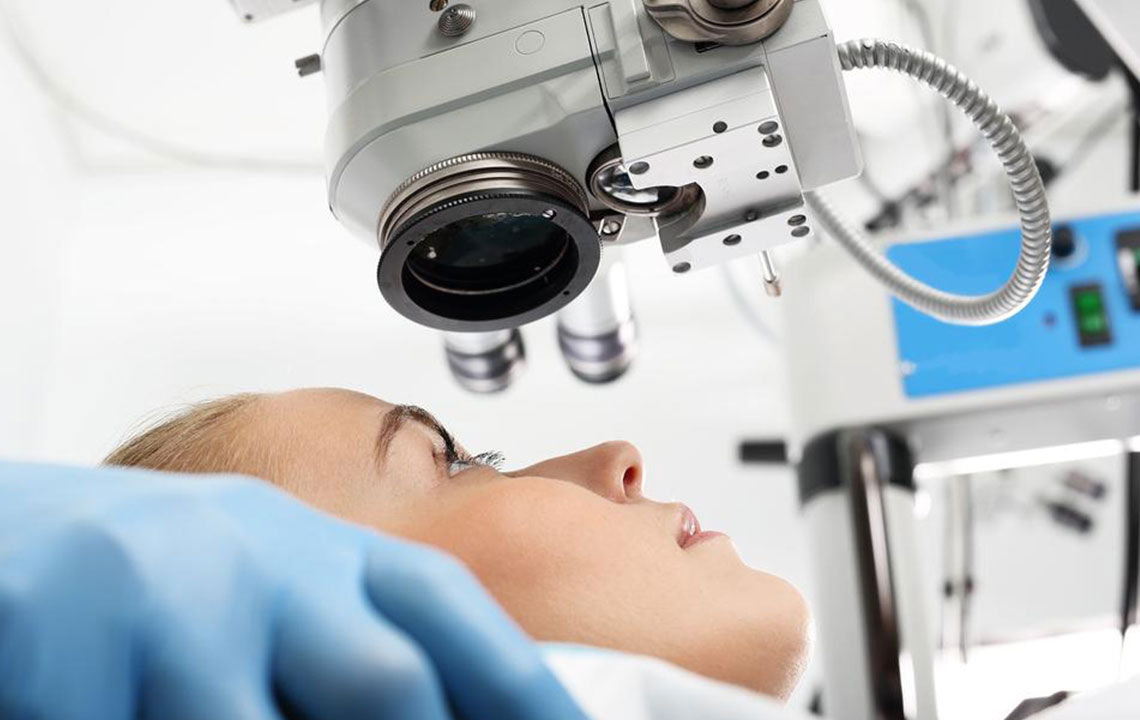A Brief Guide on How Much a Cataract Treatment Would Cost

Cataract is a condition characterized by the clouding of the eye’s natural lens, which lies behind the iris and the pupil. The arrangement of protein inside the lens in a precise fashion keeps it clear and allows the light to pass through it. However, in the due course of aging, the protein in the lens sometimes tends to clump together and cloud a small area of the lens.
There are various types of cataracts that a patient might suffer from. It usually starts out small and has minimal effect on your vision initially like minimal blurring effect. Affected people also find the light from the sun and other sources to be too bright. Sometimes patients find the colors to be dull as compared to what they would have seen in a normal vision. If this condition is left untreated, the patient may face a risk of increased patches of these protein covered areas, further damaging the lens. If you seem to have developed a cataract, it is best to undergo a surgery at the earliest as avoiding the condition may result in losing the vision.
Cataract surgery
Doctors recommend a cataract surgery if your condition prevents you from doing daily chores like driving or reading comfortably. If you suffer from cataract, the cataract treatment cost need not hamper the care that you need to regain optimal vision. Ophthalmologists perform cataract surgery by either of the two methods:
Phacoemulsification surgery: Phacoemulsification surgery is a widely popular procedure that uses ultrasound waves to break the lens of the eye apart with the help of a small incision in the surface of the eye, through which the damaged lens can be removed. A suction device is used to remove the fragmented pieces of the lens. The latest laser technology ensures that the incision made during cataract surgery is minimal and highly precise. After extracting the lens completely, the replacement is implanted. This lens is known as an intraocular lens (IOL) that are made of silicone, plastic, or other synthetic materials such as acrylic. They are custom-made to suit the specific needs of the patient. This lens is inserted into the eye through the same incision that is used to remove the natural lens.
Extracapsular surgery: Extracapsular surgery is a medical procedure where your doctor removes the cloudy part of the lens by making an incision in the cornea. Post this procedure, an artificial intraocular lens is placed in place of your natural lens.
Cataract treatment cost
When diagnosed with such a crucial condition, the first thing most patients want to know is how much would a cataract treatment cost them. Being the complex procedure that it is, cataract surgery needs to be performed by a trained ophthalmology with a specialty in using advanced equipment. Researchers indicate that the average total cataract treatment cost in the US is approximately $5080. This does not include the cost of only the cataract procedure but also diagnosis, recovery time, and post-surgery care. This value is an indicator of what you (the patient) and your health insurance company might pay together (combined) for the procedure.
How much would a cataract treatment cost for patients who have medical insurance
For all who have a medical insurance, the surgery would not burn a hole in the pocket. The cataract treatment cost may vary depending on the type of surgery, i.e., if it is a standard cataract surgery, an advanced cataract surgery with presbyopia-correcting lenses, or a multifocal LASIK surgery. Although the whole basic cataract surgery would be covered by insurance, the refractive portion (advanced or premium) such as screening tests, refractions, astigmatism correction, presbyopic correction, LASIK, or excimer laser surgery, touchups, or extended postoperative care for more than 90 days would be an out-of-pocket expense.
Additionally, as the cataract does not require you to stay in the hospital, it is counted as a relatively affordable surgery. People who are in need of prescription eyeglasses or reading glasses after the surgery due to presbyopia and residual refractive errors need to still pay out of their own pocket. If you choose to go for procedures like LASIK or PRK after the cataract surgery to be less dependent on glasses, the expenses would be needed to be shelled from your own pocket.
Patient secured by private medical policies cover only cataract surgery services only too. This included everything that is “medically necessary.” Also, copayments and deductibles often are required. The amount you will end up spending out of your own pocket during the cataract treatment varies depending on your needs and the particular IOL and other products and services you choose.
Making the most of your cataract treatment cost
It is evident from the above discussion that even if your insurance covers some of your cataract surgery, it is likely that you will have to pay some of the cataract treatment cost. Here are some tips to make sure you’re getting the most (and best) for your money:
– Meet up with a representative from your insurance company. Ask about your costs, like co-insurance, copays, and deductibles.
– Put to use your Health Savings Account (HSA), Flexible Spending Account (FSA), and Health Reimbursement Account (HRA) to manage out-of-pocket expenses.
– Research and compare prices for different doctors for various services.